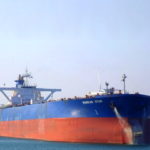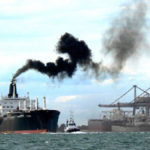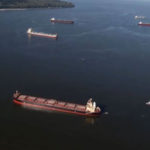No let up for commodity concerns

It’s the time of year where commentators start churning out forecasts on what freight markets can expect for the coming year. Their prognoses are usually wildly diverse, but like the last chocolates in the box, you can’t resist the guilty pleasure of digesting them, even if they are all coffee creams.
Major shipbuilding financier and Dutch multinational banking and financial services corporation ING has favoured the freight market with a relevant commodity outlook for 2020. As part of its wider 2020 FX outlook report, its commodity strategists Warren Patterson and Wenyu Yao have given their thoughts on copper, iron ore, coal, soybeans and crude oil.
Kicking off with copper, ING has concerns for 2020. The ongoing trade war and slowing global manufacturing activities have not been offset by struggling demand growth from major China and major European consumers. Into 2020, copper mine supply growth is set to increase although the outlook is still vulnerable to potential disruptions, particularly with weak prices that could cut into some smelters’ margins. “Demand in China is hoping for some support from stimulus measures from the infrastructure sector, but it is still too premature to be sanguine on the global demand recovery until we see solid signs of stabilisation in global activity, as well as solid developments from China-US trade talks,” said ING. Overall, its outlook for 2020 on copper is bearish.
More uncertainty
Iron ore is hoping to move on from a volatile 2019, when Brazil’s Vale dam accident tightened supply. Capacity has returned, alongside a recovery in Chinese iron port stocks, which has put prices under pressure. All this has led to another bearish 2020 outlook. “We expect that further Brazilian capacity will be brought back to the market over the course of the year, while there is still plenty of uncertainty around the global economy, and so this is likely to keep some pressure on steel mill margins.” However, there is a risk that Vale’s capacity may not return as quickly as anticipated, which could keep the seaborne market tighter than expected.
Prospects for coal do not raise hopes either. A switch from coal to gas for power generation – underpinned by strong EU carbon prices and weak gas prices – weighed heavy on coal demand in 2019, and the trend is set to continue into 2020.
Demand for soybeans – the “poster child for the trade war between the US and China”, according to ING – has had a resurgence of late with Chinese buyers returning to the market for US soybeans, with the government providing tariff free quotas. “However, we will likely need to see tariffs fully removed rather than just quotas being provided, in order to turn significantly more bullish on the market,” said ING.
On the supply side, the US soybean crop is expected to be significantly smaller this marketing year as farmers reduced 2019 plantings in light of the ongoing trade war. For 2020 US plantings, much will depend on how trade talks evolve over the coming quarter. But while a trade deal would be positive for US soybeans, it would in fact be bearish for Brazilian soybeans, with Chinese buyers likely to switch back to US soybeans.
Crude concerns
On the wet side, surplus supply of crude oil is expected to return over the first half of 2020 which will weaken prices. ING forecasts that benchmark Brent crude will average $59 per barrel over the first part of the year, while averaging $62 per barrel for the year as a whole.
However, this price forecast is predicated on OPEC+ not only extending its current output cut deal beyond March 2020, but also makes more significant cuts at least over the first quarter. “The magnitude of additional cuts needed to keep the market in balance is up to 1m barrels per day, we believe,” said ING.
The trade war also comes into play here and while demand growth is forecast to recover in 2020, this expectation depends on how quickly China and the US can come to a resolution in their ongoing trade war.
Perhaps, commodity charterers and brokers should consider a new tack: Gold is noted by ING as a “safe haven” that bucks the problems impaling commodities that need to be shipped. Gold prices hit a multi-year high in 2019 and that strength is set to continue. If central banks continue to buck increasing interest rates, gold prices and demand will rise further. Gold could indeed be a safe haven for those seeking refuge from what is looking to be a bearish coming year for both wet and dry commodities.
Source: Baltic Exchange
Image credit: Mikhail.Chizhevsky [CC BY-SA 3.0 (https://creativecommons.org/licenses/by-sa/3.0) or GFDL (http://www.gnu.org/copyleft/fdl.html)], from Wikimedia Commons

 Hellenic Shipping News Worldwide Hellenic Shipping News Worldwide, Online Daily Newspaper on Hellenic and International Shipping
Hellenic Shipping News Worldwide Hellenic Shipping News Worldwide, Online Daily Newspaper on Hellenic and International Shipping























 PG-Software
PG-Software